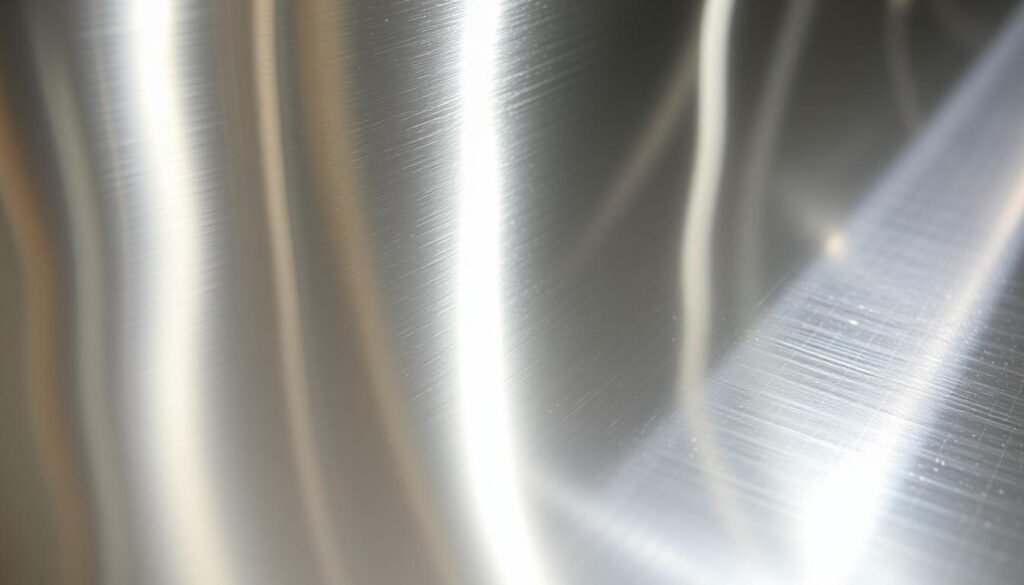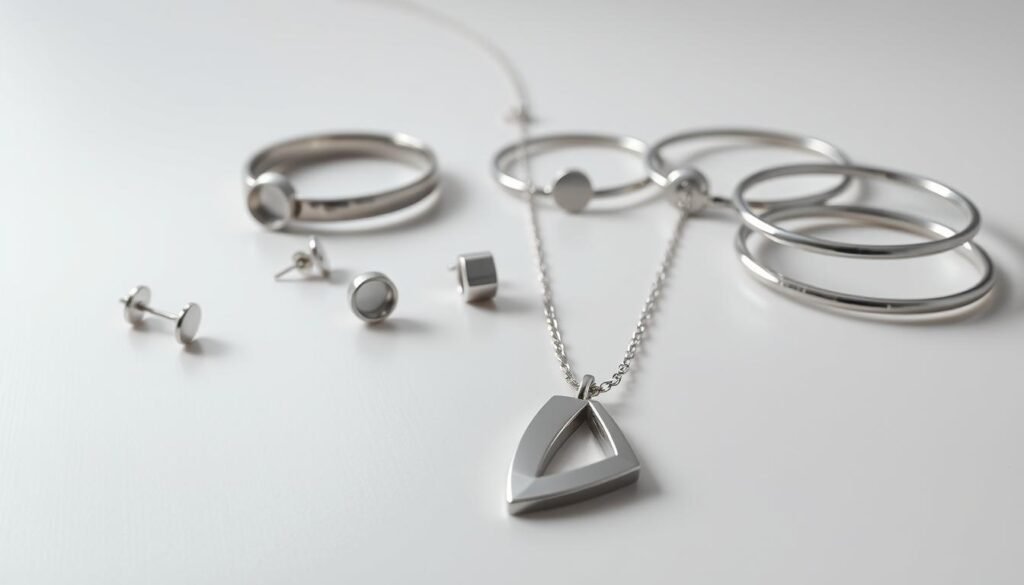When it comes to choosing jewelry, many consumers are faced with the dilemma of deciding between stainless steel and sterling silver. At first glance, these two metals may appear similar, but they differ significantly in terms of composition, durability, and value.
This comprehensive comparison will examine the key differences between these two popular metals to help you determine which one better suits your lifestyle, budget, and aesthetic preferences. By analyzing their composition, appearance, and durability, we can gain a clear understanding of their respective strengths and weaknesses.
Understanding the fundamental differences between stainless steel and sterling silver will empower you to make informed decisions when purchasing jewelry pieces that align with your specific needs and circumstances.
Understanding the Composition and Properties
To make an informed decision between sterling silver and stainless steel, it’s crucial to understand their fundamental composition and properties. This understanding will help in evaluating their durability, maintenance needs, and overall suitability for various applications.
What is Sterling Silver?
Composition: 92.5% Silver and 7.5% Alloy
Sterling silver is an alloy made up of 92.5% silver and 7.5% other metals, typically copper. This composition gives sterling silver its strength and durability while maintaining its attractive appearance.
Physical Properties and Characteristics
Sterling silver is known for its bright, lustrous finish and malleability. However, it can tarnish over time due to exposure to air and moisture, requiring regular maintenance to maintain its appearance.
What is Stainless Steel?
Composition: Steel, Chromium and Other Metals
Stainless steel is a family of iron-based alloys containing a minimum of 10.5% chromium, which creates a protective layer preventing corrosion and rust. The most common type used in jewelry is 316L (surgical steel), containing chromium, nickel, molybdenum, and other trace elements.
Physical Properties and Characteristics
Stainless steel offers exceptional hardness, high tensile strength, and remarkable scratch resistance. Its naturally reflective surface can be polished to a mirror-like finish. Stainless steel jewelry maintains its appearance without tarnishing or corroding, even when exposed to moisture or environmental factors.
| Material | Composition | Physical Properties |
|---|---|---|
| Sterling Silver | 92.5% Silver, 7.5% Alloy | Lustrous, Malleable, Tarnishes |
| Stainless Steel | Steel, Chromium, Other Metals | Hard, High Tensile Strength, Scratch Resistant |
Appearance and Aesthetic Appeal
The way jewelry looks can significantly impact its desirability and the wearer’s overall satisfaction. Both sterling silver and stainless steel have unique visual characteristics that appeal to different tastes and preferences.
The Look of Sterling Silver
Luster and Finish
Sterling silver is known for its bright, soft luster. The finish of sterling silver jewelry can vary, from a high polish that gives a mirror-like appearance to a matte finish that offers a more subdued look.
Patina Development Over Time
One characteristic of sterling silver is its tendency to develop a patina over time. This natural process can result in a darker or tarnished appearance, which some people find appealing as it adds character to the jewelry.
The Look of Stainless Steel
Shine and Reflectivity
Stainless steel jewelry is renowned for its exceptional shine and reflectivity. Thanks to its chromium content, stainless steel can achieve a high level of sheen that is maintained over time.
Consistency of Appearance
Unlike sterling silver, stainless steel maintains its appearance consistently throughout its lifetime. It does not tarnish or change color, making it ideal for those who prefer their jewelry to look the same as the day they purchased it.
Here’s a comparison of the key aesthetic features of sterling silver and stainless steel:
| Feature | Sterling Silver | Stainless Steel |
|---|---|---|
| Luster | Soft, bright luster | High shine, mirror-like reflectivity |
| Patina/Tarnish | Develops patina over time | Resistant to tarnish |
| Finish Options | High polish, matte | High polish, brushed, matte, textured |

Durability and Maintenance Comparison
Jewelry durability and maintenance needs are essential considerations for individuals choosing between stainless steel and sterling silver. Both materials have distinct characteristics that influence their longevity and appearance over time.
Sterling Silver Durability Factors
Sterling silver, while aesthetically pleasing, has specific durability concerns. It is a softer metal prone to certain types of damage.
Susceptibility to Scratches and Dents
Sterling silver jewelry can scratch or dent relatively easily due to its softer nature. This susceptibility means that pieces may require more careful handling to maintain their appearance.
Tarnishing and Required Care
Another factor is tarnishing, a chemical reaction that darkens the metal over time. Regular polishing and proper storage are necessary to maintain the shine and prevent tarnish.
Stainless Steel Durability Advantages
Stainless steel offers significant durability advantages, making it an attractive option for everyday jewelry. Its hardness and resistance to corrosion contribute to its longevity.
Scratch and Corrosion Resistance
The stainless steel alloy forms a protective chromium oxide layer on its surface, providing remarkable resistance to scratches and corrosion. This characteristic ensures that stainless steel jewelry maintains its appearance even when exposed to harsh conditions.
Minimal Maintenance Requirements
Maintenance for stainless steel jewelry is minimal, typically requiring only occasional cleaning with mild soap and water. This ease of care, combined with its durability, makes steel jewelry a practical choice for daily wear.
The exceptional durability of stainless steel stems from its hardness and corrosion resistance, allowing it to withstand the rigors of daily wear without significant degradation. For active individuals, stainless steel also offers the advantage of being able to wear jewelry during various activities without concern for damage.
Is Stainless Steel Better Than Sterling Silver for Daily Wear?
When it comes to daily wear, the debate between stainless steel and sterling silver jewelry often centers around durability and style. The decision to choose one over the other depends on various factors, including lifestyle, personal taste, and the occasion.
Everyday Practicality of Stainless Steel
Stainless steel jewelry is known for its durability and resistance to wear and tear, making it a practical choice for daily wear. Its strength and ability to withstand harsh conditions without losing its luster are significant advantages.
Resistance to Daily Wear and Tear
Stainless steel is highly resistant to scratches and corrosion, ensuring that it remains in good condition even with frequent use. This makes it an ideal choice for individuals with active lifestyles.
Suitability for Active Lifestyles
For those who engage in sports or have jobs that involve manual labor, stainless steel jewelry is a better option due to its robustness and ability to withstand rough handling.

When Sterling Silver Makes More Sense
Despite the practicality of stainless steel, sterling silver has its own set of advantages that make it suitable for certain occasions and personal styles. Its elegance and malleability allow for intricate designs that are often associated with luxury and sophistication.
Occasions and Settings
Sterling silver is considered more appropriate for formal events and professional settings due to its classic appeal and the prestige associated with precious metals.
Style Considerations
The malleability of sterling silver enables the creation of complex and detailed designs, making it a preferred choice for statement pieces and artisanal jewelry.
| Material | Durability | Style |
|---|---|---|
| Stainless Steel | High | Modern, Contemporary |
| Sterling Silver | Medium | Elegant, Classic |
In conclusion, the choice between stainless steel and sterling silver for daily wear depends on the individual’s priorities regarding durability, style, and occasion. While stainless steel excels in practicality, sterling silver offers elegance and sophistication.
Value, Cost and Investment Potential
As consumers weigh their options between stainless steel and sterling silver, understanding the financial and investment aspects of these metals becomes crucial.
When evaluating the long-term value of jewelry, it’s essential to consider the different characteristics of stainless steel and sterling silver. While both metals have their advantages, they cater to different needs and preferences.
Price Comparison and Affordability
Stainless steel jewelry is generally more affordable than sterling silver. The price difference is largely due to the cost of the raw materials and the manufacturing process. For budget-conscious consumers, stainless steel offers a more economical option without compromising on durability.
Sterling Silver as an Investment
Sterling silver is considered a valuable investment due to its precious metal content. It can retain its value or even increase in worth, making it a desirable choice for those looking to invest in jewelry. The resale market for sterling silver is well-established.
Long-term Value Considerations
Stainless steel offers consistent functional value through its durability and low maintenance requirements. Sterling silver’s value lies in its potential to appreciate in monetary value over time.
| Metal | Initial Cost | Long-term Value | Maintenance |
|---|---|---|---|
| Stainless Steel | Lower | Functional durability | Low |
| Sterling Silver | Higher | Potential appreciation | Higher |
Conclusion: Making the Right Choice Based on Your Needs
Your lifestyle, aesthetic preferences, and budget constraints play a crucial role in determining whether stainless steel or sterling silver is better suited for you. The ideal choice between these two popular metals ultimately depends on your specific needs and the intended purpose of the jewelry piece.
For everyday wear, stainless steel offers superior practical benefits, including exceptional durability and resistance to tarnishing. In contrast, sterling silver remains the preferred choice for special occasions and statement pieces where its natural luster and prestige enhance the wearer’s presentation.
Budget considerations also play a significant role, with stainless steel providing excellent value for contemporary designs at accessible price points. Meanwhile, sterling silver requires a higher initial investment but may appreciate over time. Additionally, individuals with metal sensitivities may prefer stainless steel, particularly 316L surgical steel, for its hypoallergenic properties.
Ultimately, understanding the differences between stainless steel and sterling silver empowers you to make informed decisions that align with your personal values, lifestyle needs, and aesthetic preferences. Many choose to own both, selecting stainless steel for daily wear and sterling silver for special occasions.
